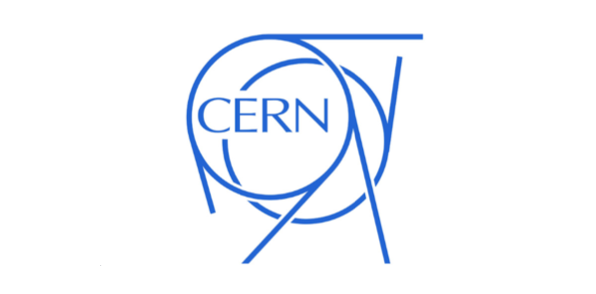Communications Strategy
CERN, the European Organization for Nuclear Research, is the world’s largest laboratory for particle physics, located on the Franco-Swiss border near Geneva. Founded in 1954, it brings together thousands of scientists and engineers from over 100 countries to explore the fundamental structure of matter and the universe. Best known for operating the Large Hadron Collider (LHC) – the most powerful particle accelerator ever built – CERN has been central to groundbreaking discoveries such as the Higgs boson in 2012. The organisation employs a remarkably diverse workforce: physicists, engineers, computer scientists, technicians, and support staff all collaborate across languages, disciplines, and cultures. This diversity makes CERN not only a hub of scientific excellence but also a place where complex communication needs arise — from highly technical research coordination and data sharing, to multilingual teamwork and global outreach – requiring systems that bridge expertise, backgrounds, secure, emergency, technical and international boundaries.
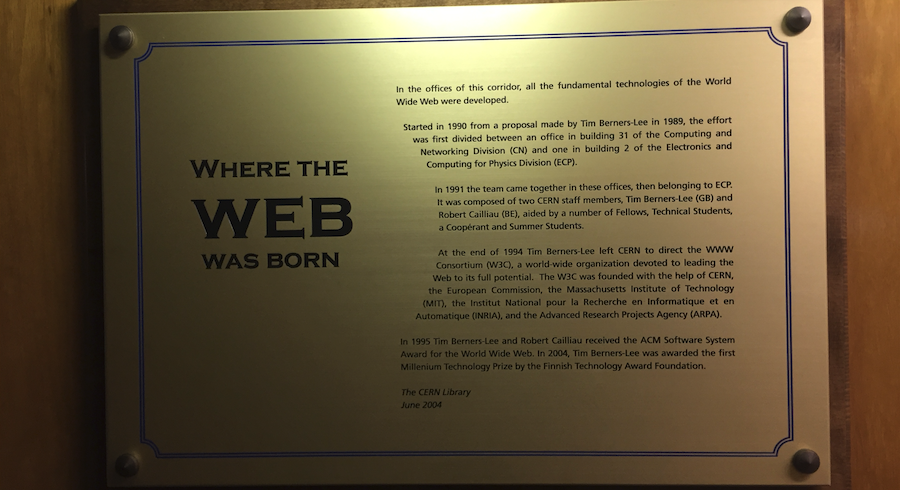
Challenge:
CERN operates at a staggering scale – a sprawling research campus spanning multiple sites and underpinning experiments built over tunnels 27 km in circumference. Today, more than 16,000 people around the world (including ~3500 employed staff) are involved in CERN’s scientific, technical, administrative, and collaborative operations.
Against this immense scale, CERN’s internal communications had evolved in silos: discrete systems, disparate channels, and opaque access rights. Contributors wishing to broadcast anything – from cafeteria menus to critical emergency alerts – faced a fragmented landscape. They often didn’t know what channels existed, who controlled them, which media each supported, or even whether their message would actually reach the intended audience.
These gaps were not just inconvenient – in an environment where experiments, operations, safety protocols, and institutional reputation are all on the line, communication delays or failures carry real risk. A missed alert could compromise safety or experiment integrity; mis-targeted messaging could erode trust or hamper coordination.
To make matters worse, CERN’s legacy infrastructure and multilingual user base added complexity. Multiple groups held publishing rights on certain channels (e.g. internal screens), and some systems were locked behind proprietary or legacy tools. No unified governance, discovery mechanism, or visibility existed across the communications ecosystem.
CERN needed a holistic, scalable solution – a single interface for publishing and subscribing across all communication types and audiences, while still allowing flexibility (e.g. choosing target channels or getting approval when required). The challenge was to design a system that spans everyday messaging and high-stakes communications, across platforms and stakeholder layers, without losing control or overwhelming the audience.
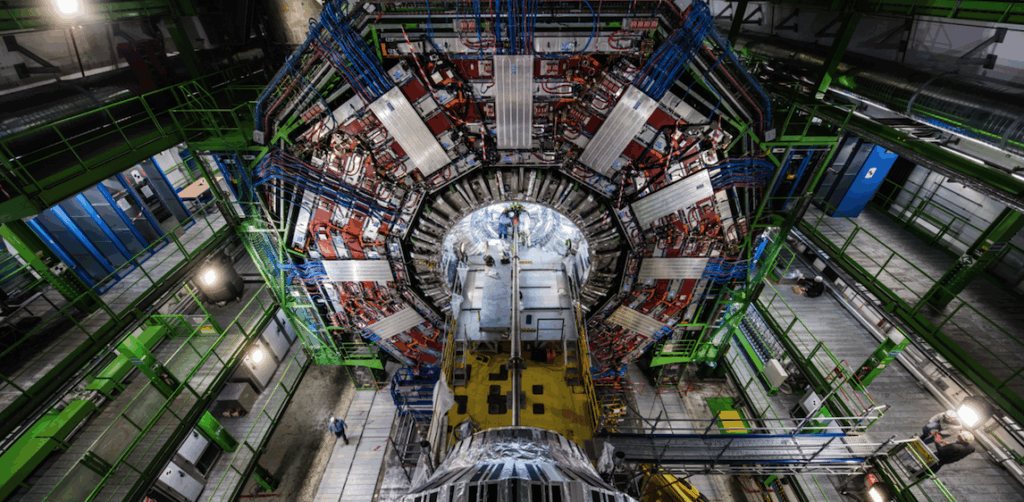
Approach:
Working on site at CERN in Switzerland, I led a comprehensive UX Discovery phase to understand the full landscape of communications practices and needs. This involved mapping the existing technologies, workflows, and drivers, and conducting in-depth interviews with representatives across every user group – from the Director General and senior leadership through to laboratory heads, university collaborators, security staff, visitor coordinators, librarians, and canteen staff.
From this research, I produced a structured matrix of requirements: the communication channels in use, their cadence and reach, the audiences they served, the technologies and formats involved, and the varying levels of access, approval, and security. I synthesised these findings into a suite of service design artefacts, including:
- Service Design Blueprint – showing end-to-end touchpoints, responsibilities, form factors and failure points.
- Ecosystem, Process, and Relationship Models – mapping technologies, data, governance layers, SMEs and interdependencies.
- User Journeys – capturing real communication flows from contributor intent through to audience reception.
- Personas/User Types – identifying contributors, publishers, and audience sub-groups with distinct behaviours, permissions and needs.
- Communication Flow Diagrams – clarifying content pathways, approval gates, channels, form factors and delivery outcomes.
- Prototypes – used to test publishing and subscription workflows, and gather early feedback.
A key insight was distinguishing between Contributors (those who generate content), Publishers (those authorised to vet and release communications), and Audiences (those receiving communications). Audiences needed secure access via CERN’s Single Sign-On (SSO), the ability to subscribe or opt in/out of non-mandatory content, and personalisation options for their central communication interface (the CCC). This reinforced the need for a solution that balanced openness with control, and flexibility with consistency.
By combining human-centred research, service design methods, and stakeholder engagement, I reframed CERN’s fragmented ecosystem into a unified vision: a scalable communication platform that empowers contributors, supports publishers, and provides audiences with a coherent, secure, and customisable experience.
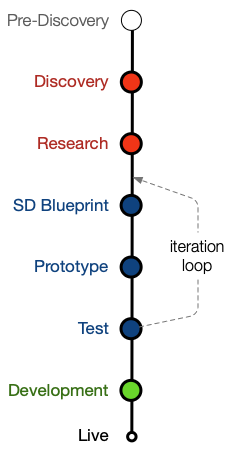
Outcomes and Value:
The project delivered a complete Service Design and Discovery report, providing CERN with – for the first time – a holistic map of its communications ecosystem. This documented every communication origin point, channel, technology, user type, and governance model, and incorporated permissions, security, and approval workflows.
From this research, I proposed and designed two complementary solution platforms:
- CCP (CERN Communication Publishing platform) – a structured interface for contributors and publishers. It streamlined publishing requests, ensured content was optimised for multiple channels and formats, and embedded governance through approvals, templates, and metadata tagging.
- CCC (CERN Central Communication platform) – an audience-facing interface, built on the existing home.cern site. It aggregated content from all channels, supported secure SSO logins, and allowed users to personalise preferences, opt in/out of non-mandatory content, and receive timely notifications via web, email, SMS, or mobile.
The combined effect was a privilege-based, extensible communications ecosystem that:
- Enabled critical communications to be broadcast in near real time across every available channel to the entire CERN campus.
- Gave all staff and collaborators a single, coherent interface for accessing communications relevant to their role.
- Reduced friction and time for contributors by guiding them to the right channels, automatically formatting content, and removing guesswork.
- Preserved necessary oversight and governance, ensuring sensitive communications were properly vetted without stifling everyday information-sharing.
- Provided a future-proof model capable of integrating new channels and scaling as CERN’s communication needs evolve.
- Improved the user experience for contributors, publishers and audiences, allowing them to tailor content, preferences, reduce noise, and feel confident they wouldn’t miss vital communication or updates.
By reframing communications as an integrated service, CERN now had the process and architecture to deliver efficient, secure, and audience-centred communication at scale – supporting both the everyday needs of its 16,000-strong community, external communication to the world and the high-stakes requirements of world-leading experiments.
Contributors and Publishers : The CCP (CERN Communication Publishing platform) overview
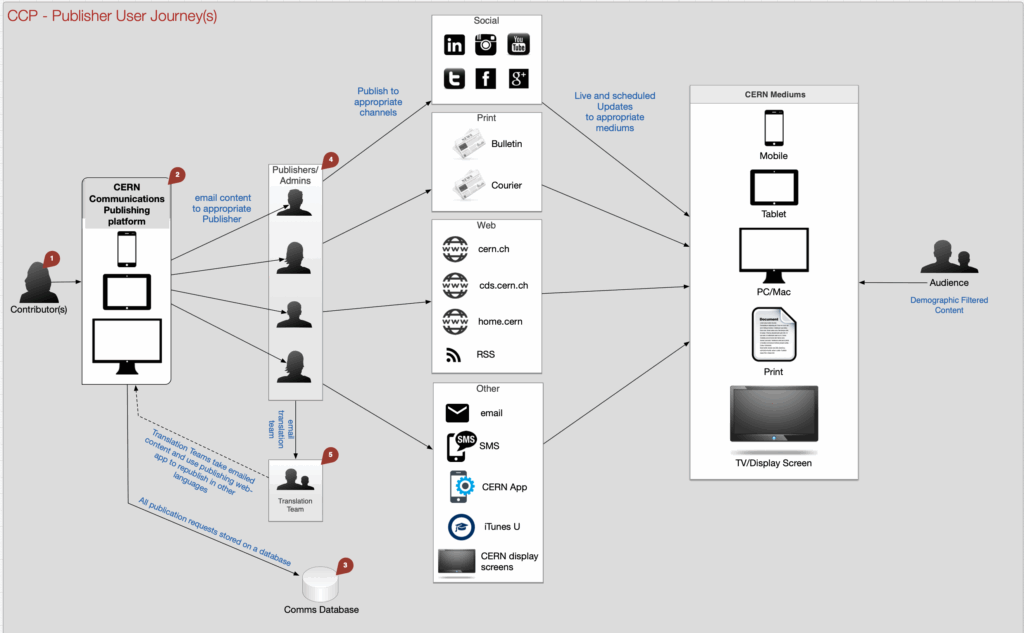
Audience : The CCC (CERN Central Communication platform) overview
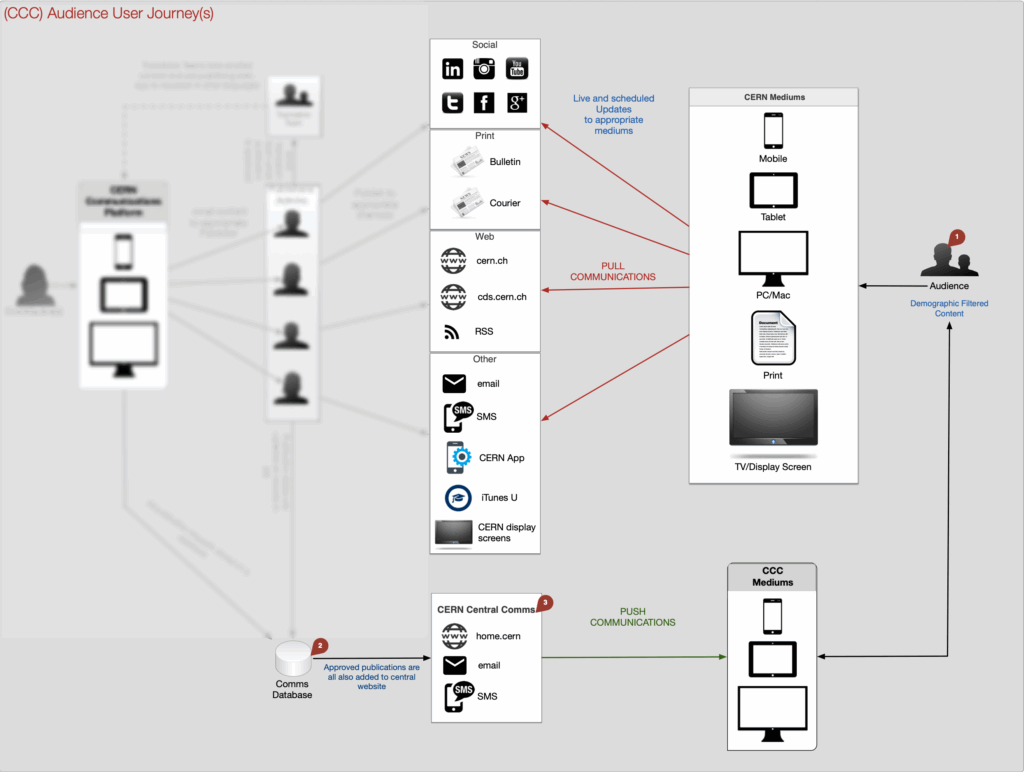
Testimonial
N/A
Role – name

